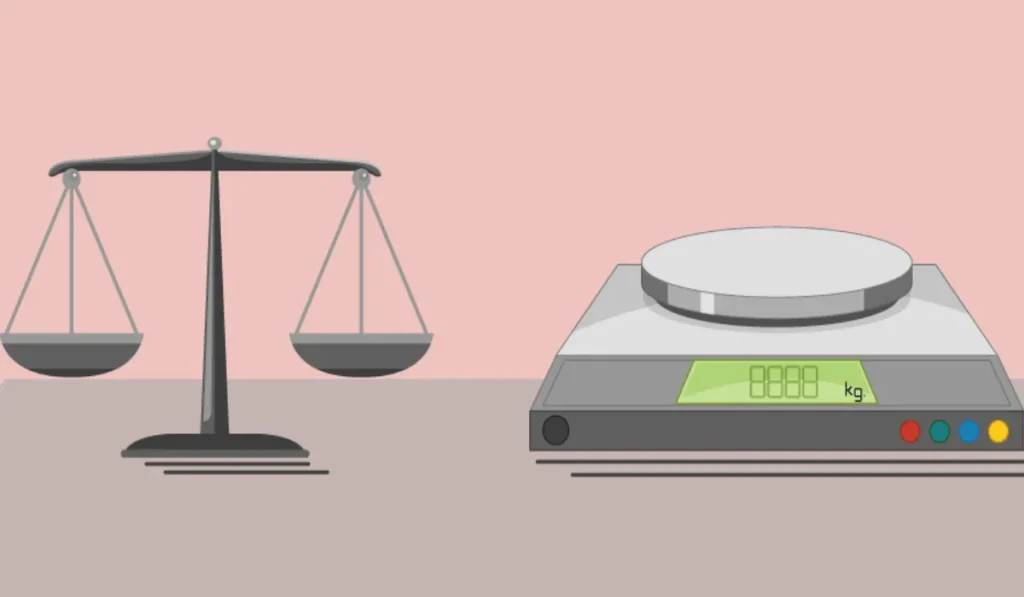10 pounds is equivalent to 4.54 kilograms. This weight measures a substantial yet manageable heft.
Understanding the weight of 10 pounds is beneficial in a variety of contexts, from shipping parcels to gauging the heft of gym equipment.
Whether you’re purchasing produce, comparing weight loss, or lifting weights, recognizing the significance of this measure can be crucial.
Ten pounds can be visualized as roughly the weight of a large bag of potatoes or a medium-sized bowling ball.
This unit of weight is often used in everyday life and is an easy benchmark for estimating other weights.
Engaging with the concept of 10 pounds provides a tangible way to comprehend and communicate weight in practical, real-world situations.

The Weight Of Common Objects
Understanding the weight of common objects can be handy. It helps in shipping, moving, and daily activities.
But visualizing weight can be tricky. Let’s demystify what 10 pounds feels like by comparing it to items around us.
Household Items Weighing Around 10 Pounds
Many household items come in around the 10-pound mark. Here’s a list to help you get a grasp on what 10 pounds represents.
- A large bag of potatoes
- Medium-sized bowling ball
- Average cat or small dog
- Basic countertop microwave oven
- Two-gallon paint can
Grocery Comparisons To Visualize 10 Pounds
Groceries offer clear visual aids for understanding weight. Picture these familiar items when thinking of 10 pounds:
| Grocery Item | Weight Equivalent |
|---|---|
| Butter sticks | 40 sticks (¼ lb each) |
| Ground coffee | 40 standard packs (4 oz each) |
| Sugar bags | About 4 standard bags (2.5 lb each) |
| Chicken breasts | About 6 medium-sized pieces |
| Cans of soup | Approximately 20 cans (7 oz each) |
Human Perception Of Weight

Understanding how humans perceive the weight of objects around us is fascinating. When we think about weight, we consider not only the physical mass but also how our bodies and minds react to lifting and carrying.
The human perception of weight can vary widely depending on several factors. Exploring these can shed light on why something as seemingly straightforward as a 10-pound object might feel different from person to person.
The Psychological Impact Of Lifting 10 Pounds
Lifting a 10-pound weight might seem simple. But our minds play a big role in this experience.
Expectations, context, and individual fitness levels all shape how heavy an object feels. A seasoned athlete might find 10 pounds to be light. Meanwhile, someone new to exercise might perceive it as challenging.
Human emotions can also alter weight perception. When feeling upbeat and energetic, the same weight can feel lighter than when one is drained or stressed.
This shows the psychological relationship with physical experiences is complex.
Factors Influencing Our Sense Of Weight
- Fitness Level: More muscle often means less perceived effort.
- Age: Younger individuals might find 10 pounds easier to manage.
- Mental State: Stress or distraction can make weight feel heavier.
- Prior Experience: Familiarity with lifting can lessen perceived weight.
- Size and Shape: Bulky items seem heavier due to awkward handling.
It’s not only the number on the scale that counts. The way we carry, the distribution of weight, and even the type of object we lift affect our perception.
The same 10 pounds could be a bag of flour, a dumbbell, or a pet. Each will feel different based on their shape and how we interact with them.
Weight In The Animal Kingdom

Weight in the Animal Kingdom offers a fascinating look at diverse creatures. Animals display an array of weights, but some are surprisingly close to what we know as 10 pounds.
It’s the weight of a hefty sack of potatoes or a large bowling ball. In the wild, several animals match this weight, giving us a sense of wonder about nature’s design and balance.
Creatures That Tip The Scales At 10 Pounds
Many animals balance right around the 10-pound mark. Let’s dive into a few.
- Domestic Cat: Some breeds, like the Maine Coon, can weigh around 10 pounds.
- Raccoon: This nocturnal critter often reaches a similar weight.
- Eagle: A grand bird, its weight can soar to around 10 pounds.
- Koala: The cuddly creature from Down Under may tip the scales too!
Newborn Animals And The 10 Pound Mark
New life begins close to this mark too. Take a look at these little wonders.
| Animal | Birth Weight |
|---|---|
| Labrador Puppy | Approx. 1lb, but grows quickly! |
| Baby Giant Panda | Surprisingly tiny, merely 4 ounces! |
| Newborn Sheep | A lamb can weigh a hefty 10 pounds. |
10 Pounds In The World Of Fitness
In the fitness universe, 10 pounds signifies more than just a number on a scale. It represents a versatile weight category that both beginners and seasoned gym enthusiasts frequently engage with.
Whether embarking on a new exercise regimen or spicing up a current routine, 10-pound weights serve as a crucial milestone for various workout objectives.
Let’s delve into how a seemingly modest 10-pound weight can make a substantial impact.
Exercise Equipment At The 10-pound Level
Various fitness tools fit into the 10-pound category:
- Dumbbells: Perfect for bilateral movements and single-limb exercises.
- Kettlebells: Ideal for swings, squats, and endurance workouts.
- Medicine Balls: Excellent for core training and dynamic throws.
- Ankle Weights: Enhance leg and glute exercises, boosting intensity.
- Weight Plates: Can be used standalone for various strength movements.
These tools challenge muscles differently and are foundational for progressing in strength training.
The Results Of Lifting 10-pound Weights
Lifting weights, including 10-pounders, yields notable benefits:
| Benefit | Description |
|---|---|
| Toned Muscles | Regularly lifting enhances muscle definition. |
| Increased Strength | Strengthens muscle fibers for daily tasks. |
| Improved Endurance | Builds stamina for prolonged physical activity. |
| Joint Health | Weightlifting supports and strengthens joints. |
Consistently integrating 10-pound weights into workouts can lead to these positive changes. Start small and scale up to avoid injury and ensure steady progress.
Culinary Conversions And Measurements
Understanding the weight of ingredients is crucial in the kitchen. Culinary conversions help ensure accuracy for delicious results.
Ten pounds may sound hefty, but converting it into familiar kitchen items illuminates its practicality.
Food Quantities Equivalent To 10 Pounds
When picturing 10 pounds of food, think of these common items:
- 40 to 50 medium apples – Roughly the size of four grocery bags.
- 100 to 120 medium eggs – About two full cartons.
- 30 to 40 medium potatoes – A large sack from the supermarket.
- 10 to 15 whole chickens – Depending on the size, that’s a full freezer shelf!
Using A 10-pound Measurement For Cooking
When recipes call for large quantities, a 10-pound marker is helpful:
- Batch Cooking – Prepare meals for the week or a big event.
- Canning and Preserving – Make large quantities of jams, pickles, or sauces.
- Meal Services – Cook in bulk for meal prep companies or community services.
A 10-pound weight is often used in professional kitchens and serious home cooking. Knowing how to measure and convert this weight can be incredibly useful:
| Ingredient | Volume | Approximate Units |
|---|---|---|
| Flour | 35-40 cups | Two large canisters |
| Sugar | 22-25 cups | One large bag |
| Rice | 45-50 cups | Half a large sack |
| Butter | 40 sticks | 10 four-stick packs |
The Impact Of Carrying Extra Weight
The Impact of Carrying Extra Weight reaches far beyond the inconvenience of heavier bags.
An additional 10 pounds on your frame can be more significant than anticipated. Common daily tasks might become more challenging and long-term health can suffer. Understanding the effects of this extra weight is crucial to both health and ergonomics.
Health Implications Of An Additional 10 Pounds
Carrying an extra 10 pounds may not seem alarming, but it can alter the body’s balance. The strain from this additional weight can lead to:
- Joint pain, especially in the knees and hips
- Increased risk of cardiovascular diseases
- Higher chances of developing type 2 diabetes
- Potential to put on more weight, resulting in obesity
This added weight forces the body to work harder circulatory and skeletal systems
Ergonomic Considerations For Carrying Weight
Ergonomics focuses on minimizing stress and maximizing efficiency. Extra weight can affect posture and lead to fatigue. Consider the following ergonomic guidelines:
- Use backpacks with padded straps to distribute weight evenly.
- Opt for rolling suitcases to ease the load.
- Maintain straight posture when carrying weight.
- Switch sides often if using a single-strap bag.
Applying these tips can help reduce the stress that comes with extra weight.
FAQs About the Weight of 10 Pounds
What Items Typically Weigh 10 Pounds?
Household items like a small microwave, a high chair, or a gallon of paint often weigh around 10 pounds. These are common objects that provide a relatable comparison for understanding the weight.
Can Newborns Weigh 10 Pounds?
Yes, while the average newborn weighs between 5. 5 and 8. 8 pounds, it’s possible for a healthy newborn to weigh 10 pounds.
Babies of this weight are often referred to as ‘hefty’ or ‘chonky’ by many parents and pediatricians.
How Does 10 Pounds Of Fat Look?
Ten pounds of fat is voluminous, resembling a small pillow or a large grapefruit in size.
It’s soft and less dense compared to muscle, and losing this amount can be quite noticeable in one’s physical appearance.
Is Carrying 10 Pounds A Good Workout?
Carrying a weight of 10 pounds can serve as a moderate workout, especially when used for resistance training or during activities like brisk walking. It can help tone muscles and improve cardiovascular health.
Conclusion
Understanding the heft of 10 pounds is vital for everyday tasks and health goals. It equates to the weight of a large sack of potatoes or a newborn. This knowledge empowers you to estimate weights and stay aware of your surroundings.
Remember, 10 pounds can feel surprisingly heavy or light, depending on context and conditioning. Stay informed and handle with care!
Resources:
https://www.uu.edu/dept/physics/scienceguys/2004May.cfm
https://www.britannica.com/science/pound-unit-of-weight
